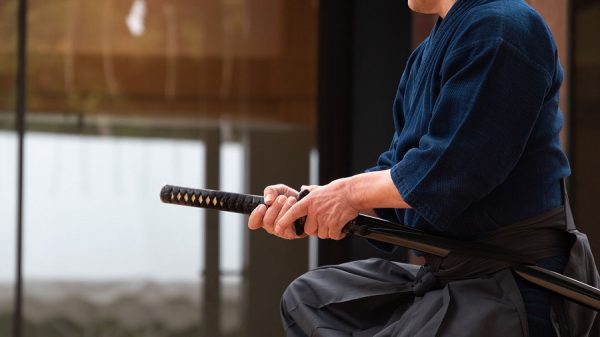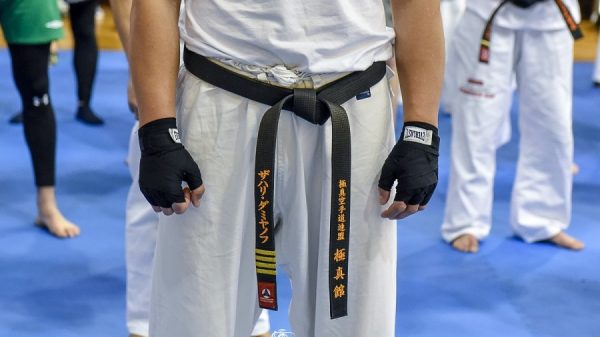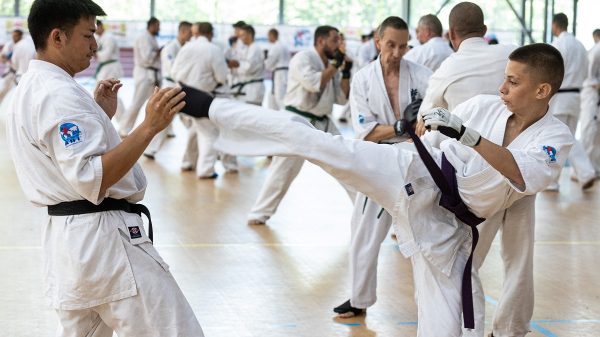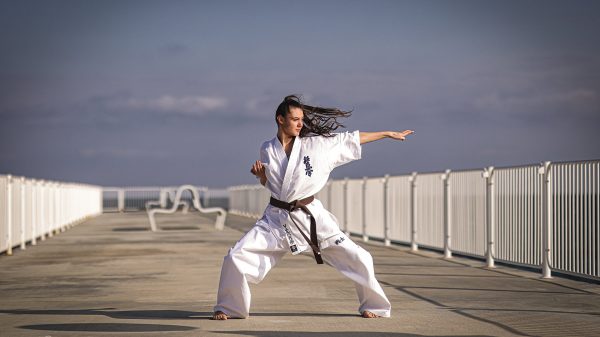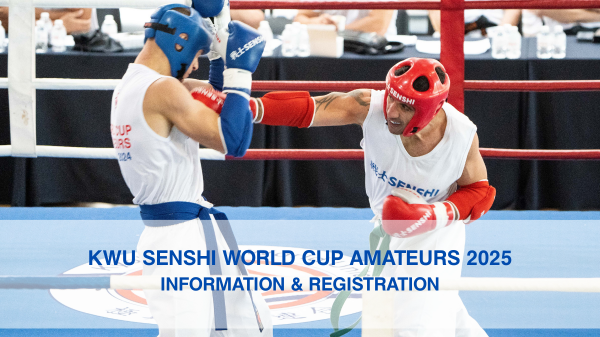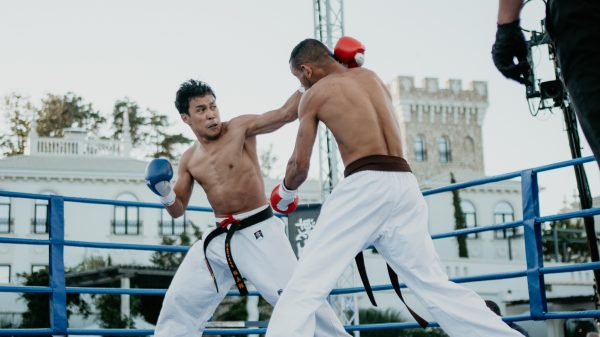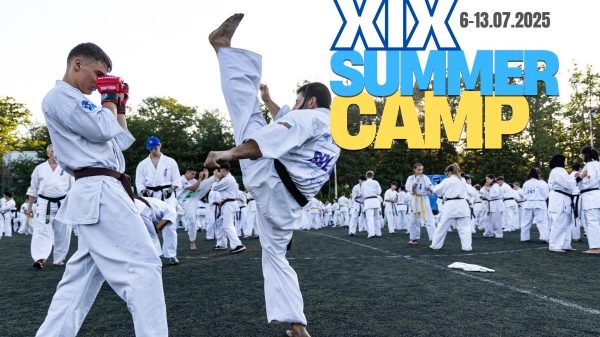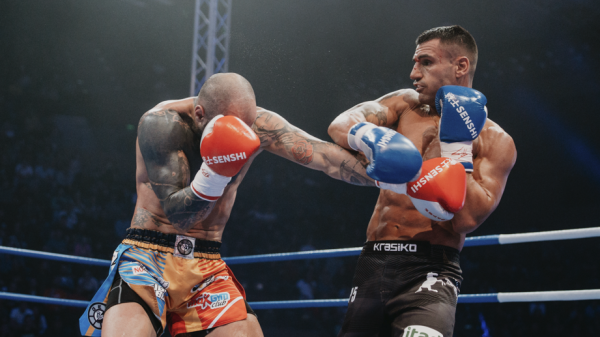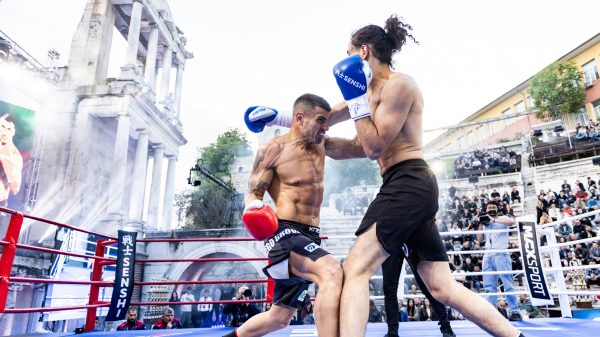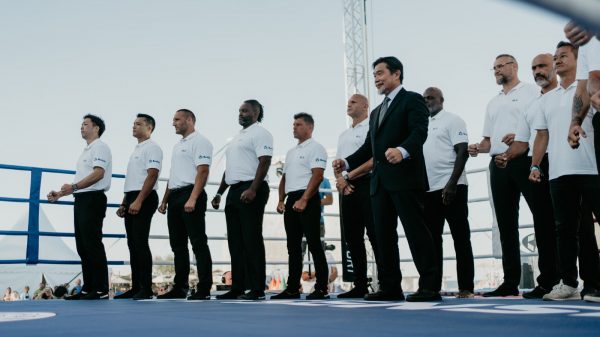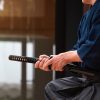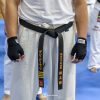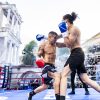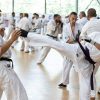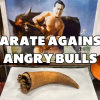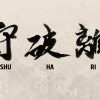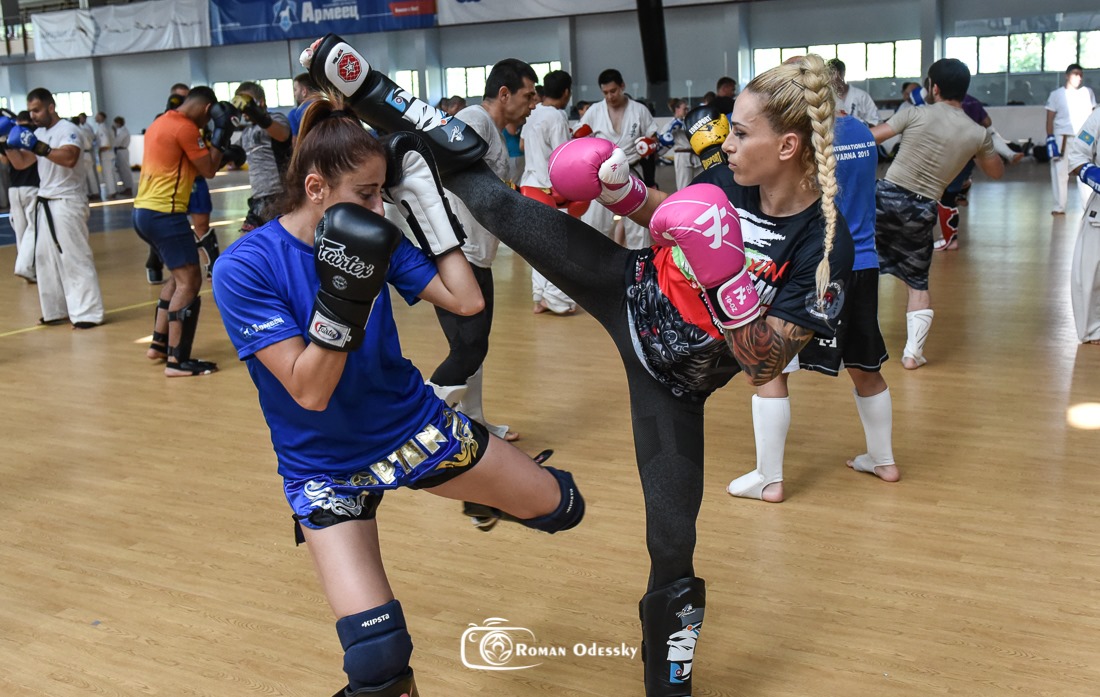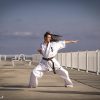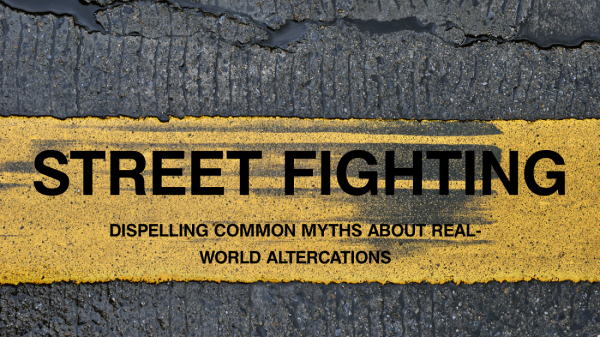The Martial Way blog: My good friend and full-contact karate fighter Norihiro Yoshida
was visiting recently from Japan. It had been a year since he visited before and trained at Contact Kicks Dojo for a few months and competed. This visit however was very brief.
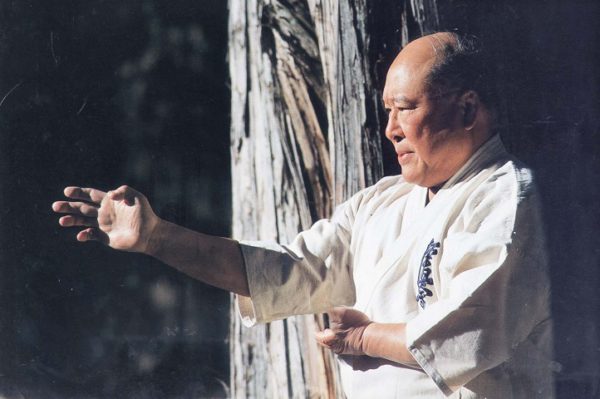
While he was here he only had the opportunity to train one day. Afterwards we spent a lot of time catching and chatting. As part of that he was commenting on the way people pronounce Osu outside of Japan. He was saying that many people don’t pronounce it correctly, not enough emphasis on the “O”, and was impressed with how Fogarasi Sensei pronounced it. This then led into a discussion about other words used in the dojo. I touched on some of this in a previous blog post on Reishiki – Japanese Etiquette in Kyokushin Karate.
So, based on that discussion and some research, here are 12 Japanese Words You Need To Know For Karate!
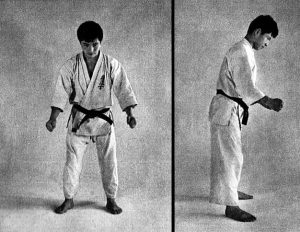 1. Osu! (pronounced Oh’ss with the stress on the O), Osu is a word that you will hear in all Kyokushin dojos, and has been adopted by some other martial arts, such as Brazilian Jiu-Jitsu and other full-contact styles. When you enter or leave the dojo, you bow and say “Osu”. When you greet a fellow student, you use “Osu” instead of “hello”. When you respond to your teacher for anything, you say Osu! It is used as a sign of respect towards fighters at tournaments. It’s generally a word that can be used in many situations.
1. Osu! (pronounced Oh’ss with the stress on the O), Osu is a word that you will hear in all Kyokushin dojos, and has been adopted by some other martial arts, such as Brazilian Jiu-Jitsu and other full-contact styles. When you enter or leave the dojo, you bow and say “Osu”. When you greet a fellow student, you use “Osu” instead of “hello”. When you respond to your teacher for anything, you say Osu! It is used as a sign of respect towards fighters at tournaments. It’s generally a word that can be used in many situations.
Osu is a contraction of two words:
押し Oshi meaning “Push”
忍ぶ Shinobu meaning “to Endure”
Thus, Osu can mean patience, determination and perseverance. When you are pushing yourself beyond your limits, you use Osu!
2. Sensei – [sen say] In spite of many North American martial arts schools using it as “master”, it does not mean this. Sensei (先生) is literally translated as “person born before another”. In general usage within Japan, it is used after a person’s name, and means “teacher”. It is used in all schools to address teachers and professors, as well as professionals such as lawyers, doctors, politicians, and other figures of authority. The word is also used to show respect to someone who has achieved a certain level of mastery in an art form or some other skill: accomplished novelists, musicians, artists and martial artists.
3. Seiza (正座 or 正坐) – [say za] literally means “proper sitting” and is the Japanese term for one of the 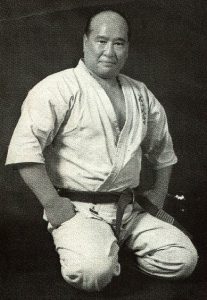 traditional formal ways of kneeling in Japan. To sit seiza-style in Kyokushin, one must first be kneeling on the floor, folding one’s legs underneath one’s thighs, while resting the buttocks on the heels. The ankles are turned outward as the tops of the feet are lowered so that, in a slight “V” shape, the tops of the feet are flat on the floor and big toes sometimes are overlapped, and the buttocks are finally lowered all the way down. Within Kyokushin the fists are placed on the upper thigh. The back is kept straight, though not unnaturally stiff. Traditionally, women sit with the knees together while men separate them slightly, roughly two fist widths of distance between the knees.
traditional formal ways of kneeling in Japan. To sit seiza-style in Kyokushin, one must first be kneeling on the floor, folding one’s legs underneath one’s thighs, while resting the buttocks on the heels. The ankles are turned outward as the tops of the feet are lowered so that, in a slight “V” shape, the tops of the feet are flat on the floor and big toes sometimes are overlapped, and the buttocks are finally lowered all the way down. Within Kyokushin the fists are placed on the upper thigh. The back is kept straight, though not unnaturally stiff. Traditionally, women sit with the knees together while men separate them slightly, roughly two fist widths of distance between the knees.
4. Shomen ni rei – [show men nee ray] literally means “bow to the front”, and denotes respect to all the practitioners that came before us (our instructor’s instructor and so forth) which is usually followed by, “Sensei ni rei” (bow to the teacher), this is followed by “Otagai ni rei” (bow to others), to show respect to all of your training partners. If there is a Shihan present, you will say Shihan ni rei (bow to the master instructor).
From seiza (kneeling), facing the front of the dojo, bow (rei) at the waist 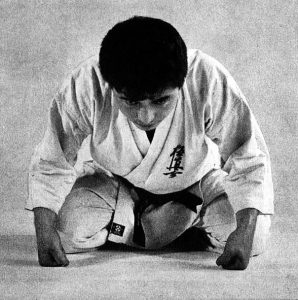 placing first your left fist and then your right fist on the floor in front of you. Keep your back straight and avoid raising your hips. Do not duck your head; keep your neck in alignment with your back. After a short pause, and Sensei has completed his/her bow, you raise yourself back to the seiza position, retracting first your right hand and then your left. Place your fists comfortably on your thighs.
placing first your left fist and then your right fist on the floor in front of you. Keep your back straight and avoid raising your hips. Do not duck your head; keep your neck in alignment with your back. After a short pause, and Sensei has completed his/her bow, you raise yourself back to the seiza position, retracting first your right hand and then your left. Place your fists comfortably on your thighs.
5. Mokusō (黙想 pronounced “moh-kso”) is a Japanese term for meditation, especially when practiced in the traditional Japanese
martial arts. Mokuso is performed before beginning a training session in order to “clear one’s mind”, very similar to the zen concept of mushin, or “no mind”. The term Mokusō is more formally known to mean, “Warming up the mind for training hard.”
6. Arigatou gozaimasu – [ah-ree-gah-toh goh-zah-ee-mas] means ‘thank you’, and is used for either something that will be done or something that has been done. In Japan, one can never say, “Thank you” or be thanked enough when expressing appreciation and gratitude in any number of situations, especially within the dojo to someone of higher rank.
7. Dōitashimashite – [doe-ee-tah-she-mahssh-tay] means you’re welcome in Japanese. However, it is not recommend to use this phrase in Japanese or martial arts dojos. This is because it doesn’t sound humble, but instead it could sound like you think you deserve some appreciation. It isn’t used the same way as it is in English. In Japanese it can be taken as arrogant. If you actually do think you deserve some appreciation, you’re suppose to hide it in Japanese!
8. Onegaishimasu – [oh-nay-guy-she-mus] translates roughly as “please take care of me” or “I am in your care” or “please have patience with me”. It is a word that isn’t used too much within North American dojos, and when it is it is sometimes misused, but should be used more often to show respect. It is very important within dojos of Japan, when asking of instruction or help from a senior student or teacher. It is essentially a polite way of saying ‘please.’ It isn’t a word used exclusively for martial arts.
Onegaishimasu is a sign of “humbleness”. In north American dojos you might hear it screamed out, like you would Osu!, but this isn’t correct and can be considered rude. Onegaishimasu should always be said with gratitude in a humble way.
9. Senpai (先輩) – [sem pie] is someone who is of a higher social standard, such as an upperclassman or upperclasswoman, someone of a higher age, or senior in rank. Sen or先means early, in advance, first or prior. Hai, 輩 means fellow, person, colleague, or people.
The mentor system is found at all levels of education, and in sports clubs, businesses, and informal or social organizations within Japan. The relationship is an essential element of Japanese seniority-based status relationships, similar to the way that family and other relationships are decided based on age, in which even twins may be divided into elder and younger siblings. And the dojo is a family after all.
10. kōhai (後輩)- [koe hi] is a protégé, one’s junior or underclassman. Ko, 後means later, afterwards, rear or aback. So Kohai is someone that started later than another person.
11. Kata (型 or 形) literally means “form”, the detailed choreographed patterns of movements practised either solo or in pairs. Kata are used in many traditional Japanese arts such as theater forms like kabuki and schools of tea ceremony (chado), but are most commonly known for the presence in the martial arts. Kata are used by most Japanese and Okinawan martial arts, such as aikido, judo, kendo and karate.
12. Kihon (基本, きほん ) – [key hone] is a Japanese term meaning “basics” or “fundamentals.” The term is used to refer to the basic techniques that are taught and practiced as the foundation of most Japanese martial arts.
OSU!



